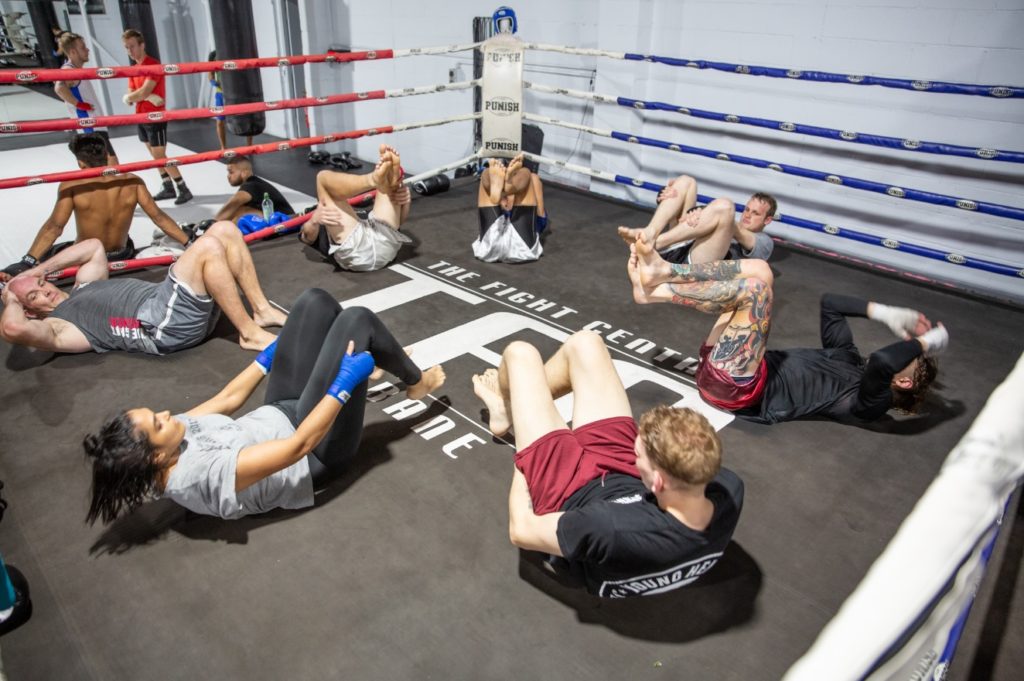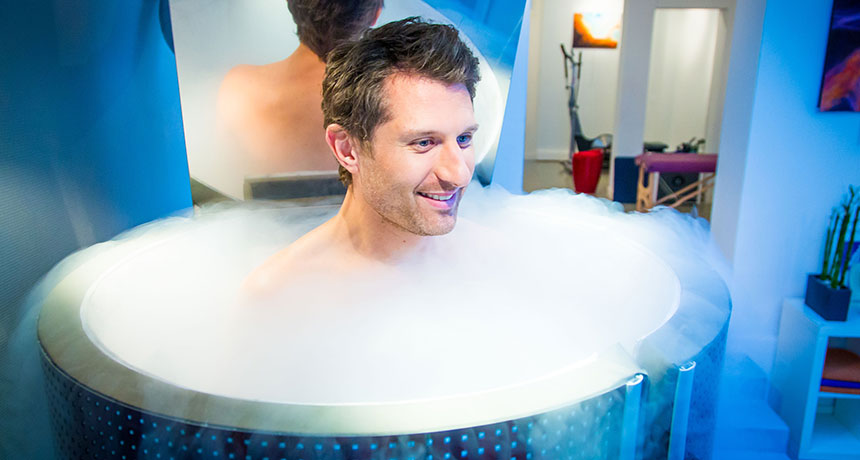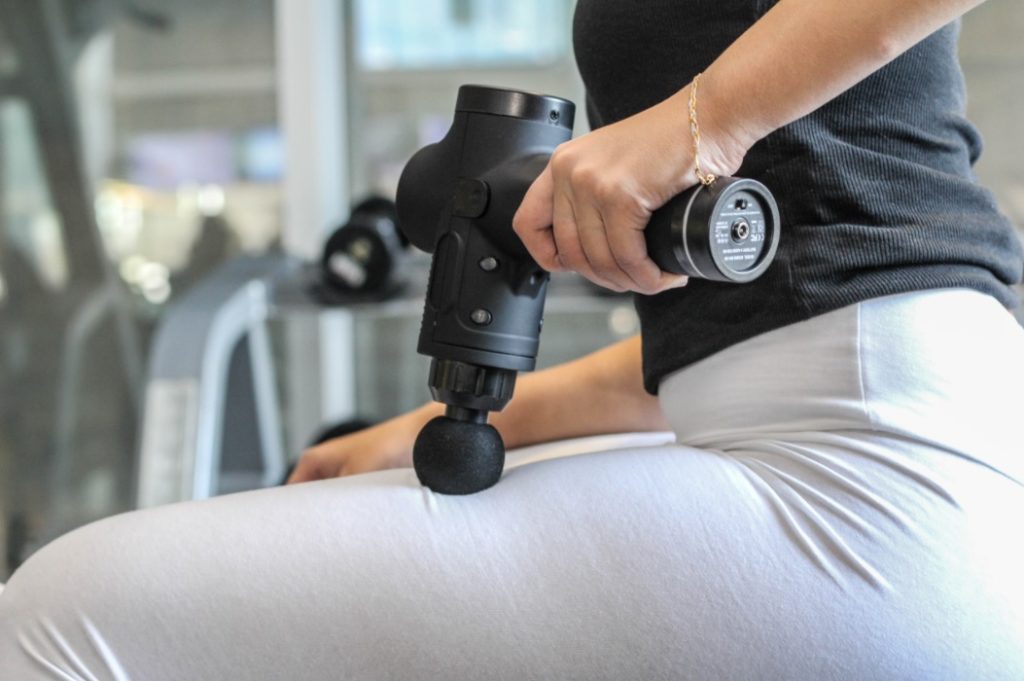You know you’ve had a good workout when you’re tired and sore the day after. Delayed Onset Muscle Soreness (DOMS) is a real pain to deal with—quite literally. We’ve all been acquainted with it at some point. It indicates how far you’ve pushed beyond the limits of comfort while working out. To some, the intensity of soreness even translates to how much it feels like an accomplishment.
Unfortunately, there are times when DOMS becomes less of an accomplishment and more of a hindrance. They can get bad enough to affect your day-to-day functionality. You may even miss a training day or, in the worst-case scenario, days. That may not sound like a big deal to outsiders, but for us people practicing martial arts, that means missing lessons taught during the class. It means potentially lagging behind the rest of the group.
While the soreness may feel like an accomplishment, we want to do away with it as soon as possible. In this article, we explore DOMS and list down activities you can do to accelerate your muscle recovery.
-
Why do you get sore after a workout?
Our muscles are constantly breaking down old cells and synthesizing new ones to maintain the integrity of the whole muscle unit. Some activities rapidly accelerate this turnover process. Such examples are when you do new types of exercise your body isn’t used to and amp up the intensity of your usual workouts to the next level.1
Lactic acid has always been blamed as the main culprit in DOMS, but this is a heavily contested claim. Studies in the ’80s have disagreed with this theory.2 Another belief is that muscle breakdown causes soreness, but that’s not quite right.
What? If it’s not any of the two, then what causes DOMS?
Inflammation causes the soreness you experience after an intense workout session. When any organ (in this case, the muscles) are damaged in any way, inflammation is the body’s natural response—the first step to any healing process.3 Technically, it’s not the microtears that cause soreness. Instead, it’s the body’s healing mechanisms that are to blame.
There is a barely-perceptible amount of swelling in the affected muscles during DOMS. The influx of fluid compresses the nerves in the area, resulting in the pain typically described as soreness.4 This explains why the soreness in DOMS is also sensitive to pressure.
-
Should you train when you're sore?
There’s no absolute yes or no answer to this question. It depends on how sore you are, how well you can cope with the pain, and the type of exercise you want to do. If the soreness you experience is minor enough to be brushed aside, then you shouldn’t have any problem doing your workouts as usual.
If you’re too sore that every movement seems like a challenge, you may opt to do workouts that target muscle groups other than the ones in pain. Some therapy and recovery exercises can get you back on the top of your game sooner if you can manage them.
Some days, you may wake up feeling like you can barely get out of bed. There’s no shame in taking a day off to rest and recover. If you think a day (or a few days off) is what your body needs, then go ahead. You know your body best, and you know when it can and when it can’t handle any more strain.
-
Muscle Recovery Techniques
Here are a few methods that you can try out the next time you’re sore:
-
1 Cryotherapy
Cryotherapy is the new age’s ice bath. Technically, it refers to the use of low temperature for its therapeutic effects. The standard RICE method (rest, ice, compression, elevation) used in inflammation is one of its forms. When people talk about it for its therapeutic effects, they usually refer to one specific type—whole-body cryotherapy.5
Whole-body cryotherapy happens in cryo booths with temperatures going down to zero or subzero. It can be in the form of small cubicles or frosty booths going up to neck level. It’s generally safe for healthy people, but people can only go in for a maximum of five minutes given the extreme cold. The risk of hypothermia is tightly controlled, thanks to the strict time limit.
Photo grabbed from ScienceNews
What’s the rationale behind this treatment? Cryotherapy boosts muscle recovery through two main phases: the cold and the post-cold. Upon entry into the cryo chamber, the cold constricts the blood vessels. As a result, it controls the intensity of inflammation and reduces the injury caused by exercise-induced enzymes. Upon exit from the chamber, the blood vessels rapidly expand, bringing in a rush of anti-inflammatory interleukins. Inflammation and soreness are minimized by the combined effects of these mentioned above.6
Other purported health benefits of cryotherapy include pain relief, cancer treatment, reduced incidence of anxiety and depression, and improved symptoms of eczema.7 Cryotherapy chambers have only been around since the 1970s, however, so there is still a lot of debate around its effects and mechanisms.
There aren’t as many cryotherapy clinics as we would like around, but you can still reap the same benefits with a classic homemade ice bath. Get your ice bath to about 10°C–15°C and submerge yourself for about ten minutes for the same effect.
-
2 Percussion Therapy
Percussion therapy makes use of massage guns—which are practically massage therapists on steroids. It takes the typical massage experience and amps up the speed and power. Quite literally, it hammers at your muscles with vibrations and intense pulses of force to loosen them up.8 A great advantage to massage guns is that their effects can reach even the deeper muscles, which the hands can’t reach.
These percussive guns (also called massage guns) use rapid strokes to deliver strong blows to the muscles. It looks like a power drill, sounds like a power drill, but it’s no power drill. It’s just one of the world’s buzziest sports recovery tools—literally and figuratively. Their healing effects include boosting recovery by relieving soreness. As a result, it improves flexibility and widens the range of motion.
There’s no proven explanation for how it works yet, but there are two good theories that may explain how it does what it does. The first one is that the repeated impact from the gun brings blood flow and lymphatic drainage. However, this theory hinges on the idea that lactic acid is to be blamed for DOMS. The second (and more credible) explanation is that the stimulation allows the brain to identify areas of tightness and activates neural responses to loosen those areas.9
Nevertheless, percussive therapy is one of the latest discoveries in sports recovery. Percussive therapy for sports recovery is still a very young concept, with the first massage gun being around for about a decade and a half.10 What it lacks in formal scientific studies it makes up for with considerable anecdotal evidence on the internet. Ideally, any treatment should have a substantial amount of studies backing up its claims, but it may still be worth a try since there is minimal risk to it.
-
3 Active Recovery Exercises
The concept of active recovery has been gaining a lot of interest from the fitness scene. Supposedly, by doing light exercises to speed up blood flow, you flush out lactic acid from sore muscles. But then again, scientists have conflicting opinions about whether lactic acid affects DOMS in the first place.
Yoga, walking, and swimming are some of the most recommended exercises for recovery. However, it is crucial to keep in mind that active recovery is relative to your fitness level. A study published in the Journal of Sports Medicine and Physical Fitness concluded that swimming, in particular, lowered lactate and inflammation biomarkers in the blood. There are other studies with the same conclusion. Still, these studies covered only athletes and probably doesn’t apply to everyone.
Photo by Todd Quackenbush
What would be a recovery exercise for a trained athlete can already be the average gym-goer’s full workout. The aim of active recovery is to slightly raise your heart rate to boost blood flow, not tire you out. If you’re not a very strong swimmer and you do a lap, you can expect your heart rate to push the limits of active recovery.
Generally, active recovery is only useful for athletes who expected to engage in intense exercise for days at a time. If you’re not in a competitive setting, then there’s no real need to be so urgent in your recovery. Rather than exercise on your days off, why not use your rest day to just rest? Your body will recover well on its own if you give it time.





